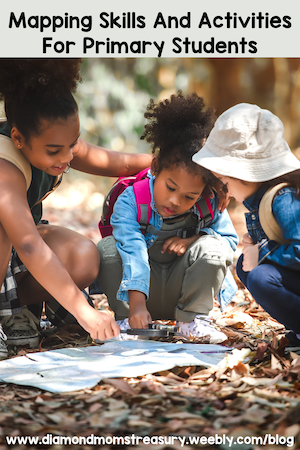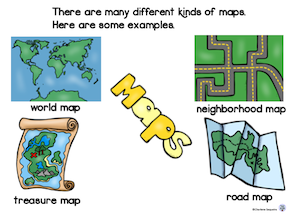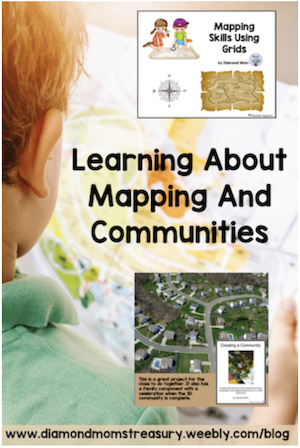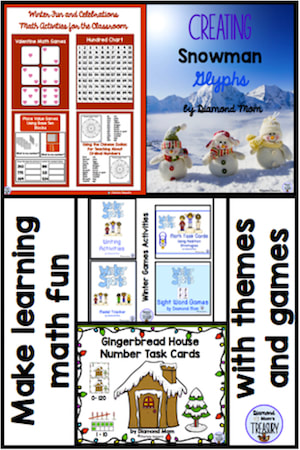|
It is Christmas! Christmas has been very different for the past couple of years due to the pandemic and restrictions. It is nice to have a more normal Christmas break this year. I am really happy to have a family Christmas. Last year, my daughter's family tested positive for Covid on Christmas Eve and we needed to quickly make different plans. The longterm home where my mother-in-law lives went into very strict restrictions on New Year's Eve and for 3 months I was the only person allowed to see her. Not what we were hoping for. It made the holidays bittersweet. Our Christmas wishes became musical videos for each other. Here is the one we shared last Christmas. Our kids also made music videos for us. Here is a parody our son made to ours. Here are the family videos made by some of our kids and their families. Carols and music are a special part of Christmas. I hope you enjoy listening to these ones. I know they have special meaning for us, but they can also bring joy to others as we think of Christmas and family time. Finally, this is my daughter and her kids singing Away In The Manger for a virtual Christmas service for her church. I could go on and on about music and how it has impacted our family, but let's just say it is more than a hobby. It is something that is of great meaning to us. As you can see from this photo, even the grandchildren play musical instruments. I am pretty sure we will have other musical moments to share in the future. I hope that you are able to have some special moments with family this holiday season. Enjoy your holiday break. See you in the New Year.
0 Comments
If you ask a group of young children what a map is, you're likely to get a variety of answers. Some will say it's a picture of a place, while others will say it shows how to get from one place to another. Some will even tell you that it's a way to find buried treasure! While all of these answers are technically correct, they only scratch the surface of what maps are and what they can do. But what all these answers have in common is that they recognize the importance of maps in our lives. Mapping is important for kids to learn about. It helps them develop their geography and spatial awareness skills, and can also be a lot of fun! There are a few key mapping terms and skills that need to be taught in order for them to be able to use maps effectively. Words like map, title, legend, compass rose, grid, scale, and symbols need to be explained and activities need to be done to practice using these terms. Key Mapping TermsIn a nutshell, here's a quick explanation of these terms. - A map is a two-dimensional representation of a three-dimensional space. - The different parts of a map include the title, symbols, legend, compass rose, grids and scale. - The title tells you what the map is of. - The symbols are shapes or small pictures that represent real things. - The legend explains the symbols used on the map. - The compass rose shows you which way is north, south, east, and west. - The grid is a set of lines that go up and down and side to side that help you find places on the map. - The scale shows the distance between places or objects. It can also be used for 3D maps to make sure that objects are appropriate sizes. Once kids know what the terms mean, they can start to figure out where things are on the map. This Map Skills booklet below will help explain these terms. Here are some sample pages. Mapping Activities To practice mapping skills, there are many different activities that children can do. Here are a few ideas to try. I have broken them down into different features. Identifying symbols and reading legendsFor identifying symbols and reading legends, provide a variety of different types of maps and have the children find the different symbols shown in the legend. Do the reverse as well. Find symbols on the maps and then identify them using the legend. It is important that they realize that sometimes the symbols do not look like the real objects, but with the legend, they will still be able to identify what they are. Using a compass roseUsing a compass rose can be lots of fun. If you have access to an area outside, it can be used to pretend to find treasure. For example: Take 10 steps North and then turn East for 20 steps. Turn South and follow along the fence for another 15 steps and turn Southwest. You are 12 steps away from the buried treasure. After physically practicing changing directions and moving, it is important to transfer this skill to a map. Perhaps they can find different places on a neighbourhood map and practice giving directions to others to help them find it too. Using gridsFor practice using grids, create grids on graph paper and practice drawing lines to connect the letters and numbers to see where they intersect. Put some objects on a grid and then play games like I Spy and have the kids tell you the coordinates for the space the object is on. You can also play games like Battleship. All of these activities will help them to become familiar with using a grid. Then you can move over to actual maps and do activities there. Working with scaleScale is a harder concept for kids to understand. It can be used in two different ways when creating a map or a community model. Scale on a map is used to represent distances. This ties in with measurement and understanding different linear measures such as inches/miles and centimetres/kilometres. Getting comfortable with using a scale with distance will take lots of practice. Using grid paper to practice drawing out different measurements will help with visualizing this. Measuring out distances on actual maps and doing the conversions is also necessary. For creating a community model, it is important for kids to see objects in relation to each other to understand how scale works. For example, if a toy car represents a real car, a toilet paper roll would be too big to represent a power pole. Creating 3D models help with visualizing scales of objects and what fits together. Creating own maps Finally, primary students can also learn how to make their own maps. This activity helps them understand how scale works, and how different features can be represented on a map. Kids love to be creative. Perhaps they could create their own neighbourhood map or treasure map and let others try to locate things using the skills they have learned. Maps are essential tools for navigation in the real world, whether we're trying to find our way around a new city or just planning a cross-country road trip. As children become more familiar with the features of a map and practice using their skills, they'll be better equipped to navigate their way through the world around them later on. Related PostsIt's that time of year again! Christmas is just 2 weeks away and a new year is around the corner. The New Year is a special occasion for kids, and there are plenty of ways to make it special in the classroom. With games and activities to teach skills and concepts, you can use special occasions to start out the year with fun. This is also a great time to refresh and set goals and prepare for new themes and units. Here are some ideas for celebrating special days in the new year. New Year's DayAlthough New Year's Day is usually a holiday, it can be the focus on the first day back after the winter break. New Year's Day is considered a day for setting goals and resolutions. Here are some ideas for making this meaningful. 1. Create a school goal, a personal goal, and a home goal and write them down. Put them on fancy paper and place it inside a personal planning folder. Throughout the year, look at them and see if they are still working. This is a good time to reflect on realistic goals and on followthrough. If they are working, celebrate. If not, make some adjustments and carry on. At the end of the school year, revisit the goals again. Grab a free copy by clicking the image below. 2. Set some class goals for the new year and maybe even a goal tracker to see how well the class is doing. There could be a reward schedule also for various accomplishments along the way. Creating a photo booth album for the class could also be fun. Check out this selection of different photo booth frames. Groundhog DayGroundhog Day is a fun occasion that is great for teaching many different science concepts. It is a perfect time for doing a weather focus, lessons on seasons, hibernation, shadows, and of course, groundhogs. It is also a time to talk about predictions. There are many other activities you can do as well. You can read books about groundhogs, guess whether or not the groundhog will see his shadow and make a graph of the predictions, and check out whether or not the groundhog did predict an early spring or more winter. You can also do other fun math activities with a groundhog theme. Chinese New Year/ Lunar New YearChinese New Year or the Lunar New Year is important in many different countries. This is a time to learn about different cultures and traditions. Read books, watch videos, and try some traditional foods as part of your celebrations. And for a fun math activity, have your students use dots (or coins) to create patterns with the lucky number 8. In North America we are most familiar with Chinese New Year and the animal zodiac. There are lots of activities that can be done to explore this further. Other places that celebrate the Lunar New Year may have different traditions and activities that they follow. It might be interesting to make some comparisons of how they are the same and different. Valentine's DayValentines Day is always a fun day for kids. It is the perfect time to talk about friendship and acts of kindness for others. One year my class tried to come up with 4 or 5 acts of friendship each and we made hearts with these on them and posted them on the bulletin board. It was great to see how this created a positive focus in the classroom. There are many language games that can be done such as sight word bingo, rhyming games, vocabulary activities, and conversation starters. Students can practice writing poems or making conversation hearts. It is also a great time to teach how to write friendly letters. Hundreds DayHundreds Day is a day of celebration in many primary classroom because it marks the hundredth day of school. There are so many different activities that can be done to celebrate this day. Hundreds Day is a perfect occasion for math activities! Students can count by ones, twos, fives, and tens to 100. They can also make patterns with 100 objects or solve word problems involving 100 objects. This is also a great day to introduce place value concepts such as ones, tens, and hundreds. Dressing up as someone who is one hundred is also a popular activity to try. It is also a great time to think about what life might have been like a hundred years ago. No matter what special days you choose to celebrate in your classroom, remember that the most important thing is to have fun! Enjoy these special occasions with your kids. They'll be sure to remember them for years to come. If you are interested in any of the resources in the images above, you can check them out here. Related PostsIf you want excitement, watch how kids react to the first sign of snow. When I woke up a few days ago, there was a light dusting of snow on the ground. Little did I know when I headed to school, it would be a few inches by lunch time. The kids kept looking out the window and watching the clock waiting for recess break so they could get outside and play. Of course this meant allowing more time for bundling up and preparing to go outside, then unbundling and dealing with snowy gear when they came back inside, as well as the many stories they had to tell about playing in the snow. Teachable MomentsTeachable moments are rampant at times like this. I like to use these events as springboards into different activities. You can still meet requirements of the curriculum by adding them in, they just have a fun twist to capture the excitement and focus of the kids. I learned early on to take advantage of this excitement instead of trying to squash it so that they could get back to work. Here are a few different ideas that I would do. Story telling and writingI would build in time to allow them to share their stories and then I would use that to help them write stories. Story writing using the fun activities they did outside can help even the most hesitant writer to put pen to paper. Once I had my class imagine what it would be like if the city froze. We talked about all kinds of crazy scenarios and possibilities and after brainstorming as a group, each person did some more brainstorming on their own. Then, they wrote stories and tried to add in many details and descriptive words to paint the picture in the reader's mind. Sharing the stories later was so much fun. Here is the template we used for the stories. Grab a free copy of Frozen templates by subscribing to my newsletter. Math And Science ActivitiesSometimes, I would take a math or science approach. This might include measuring the snow, seeing how long it takes to melt when brought inside, building a fort outside, seeing who can throw a snowball the farthest, making snow families, or checking the temperature at different times of the day to see if it gets colder or warmer. Snow AlternativesIf you live in a place that doesn't get snow, you could try doing some activities that might mimic those we did. For example: Use rolled up socks as pretend snowballs and see who can throw them the farthest. Shave up some ice and form snowballs and try to make a small snowman. Use ice cubes to build small forts Check the temperatures in different parts of the world for a few days in a row and then graph the results. Imagine what a snow day would be like and write about it. There are several winter language and math activities that you can do, but adding in the real life moments just makes them so much more fun. Here are some other winter resources that might be of interest as the cold, white days continue. Winter Sports Bundle Winter Word Work Language Activities Winter Parts Of Speech Silly Sentences For lots more ideas, check out my winter math and literacy category. Winter novel studies are also a great way to include a winter theme into your language arts. Here are some novel studies that might interest you. Emma's Magic Winter The Kids In Ms. Coleman's Class - Snow War Stone Fox Horrible Harry And The Holidaze Grab the excitement and wonder of winter and add it to your lessons for more engagement and motivation. I would love to hear some of the other ways you weave winter into your lessons. Don't forget to grab your free copy of Frozen writing templates. Related Posts |
About Me Charlene Sequeira
I am a wife, mother of 4, grandmother of 9, and a retired primary and music teacher. I love working with kids and continue to volunteer at school and teach ukulele. Categories
All
|










































 RSS Feed
RSS Feed